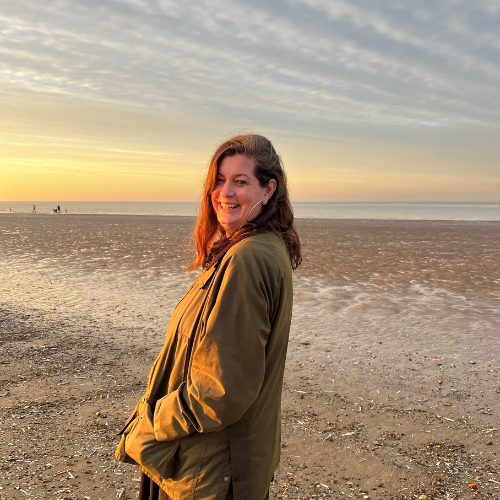Celebrating donor recognition through history and exploring why it works
We all know the value of a good thank you. But is there more you could do to recognise the generosity of all your donors – for every gift, large and small? In this article, Marina Jones shares a selection of her favourite examples of donor recognition. Dating back to mediaeval times, this is a wonderful (and sometimes weird) collection of ways that donors have been recognised for their gifts.
- Written by
- Marina Jones
- Added
- February 07, 2023
Do your holiday snaps often look like these?
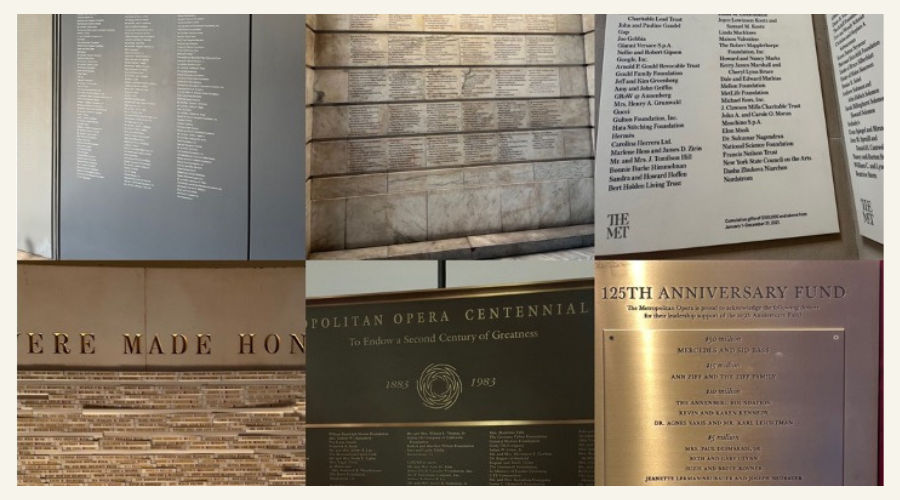
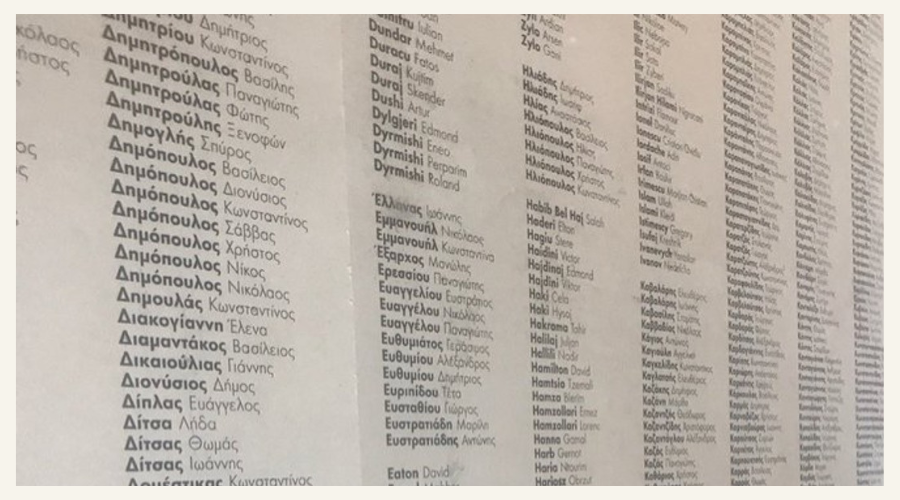
They just scream ‘fundraiser on holiday’, don’t they?
I suppose as these are a selection of my actual holiday snaps, you can tell that I’m talking about something I’m very interested in: donor walls and recognition.
I’m so interested that I photograph a lot of donor walls, plaques and memorials when I’m out and about in London or on my travels. When I look back at the ones I have in my camera roll, there are some that aren’t the best – they are actually quite dull.
But sometimes… oh sometimes they are quite pretty.

Then other times they are VERY pretty.
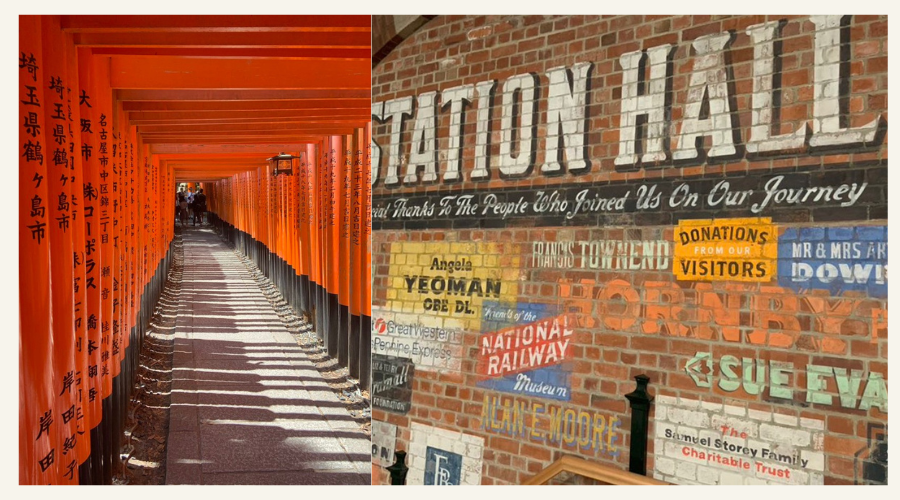
And well, occasionally they are a bit quirky and bizarre.
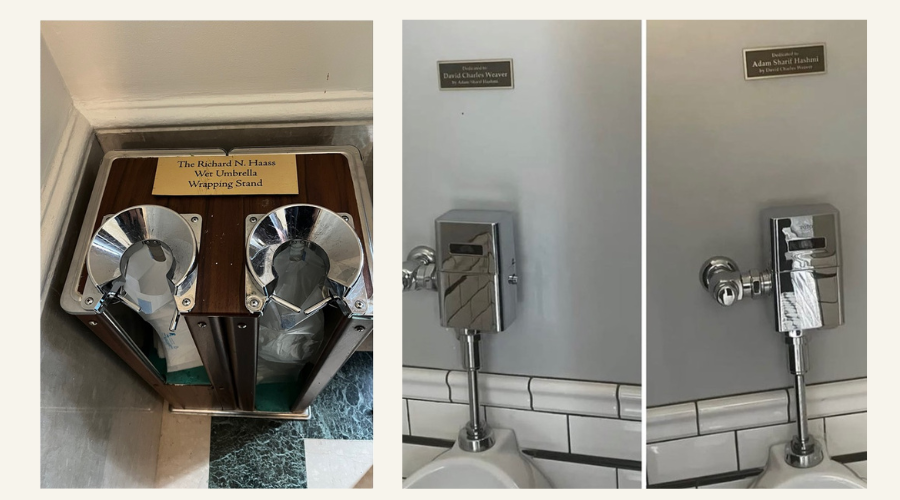
Yes those are my very own photos of a named umbrella stand and some named urinals!
I’m involved with Rogare. Rogare is a fundraising and critical thinking think tank and I’m project lead on the history of fundraising project. In this project we explore histories of fundraising and what we can learn from it. We also look at what these insights from the past tell us and how they can inform current practice.
It’s fascinating and I think you’ll be surprised to learn how many weird and wonderful things there are to see – especially when it comes looking at how organisations have recognised their donors throughout history.
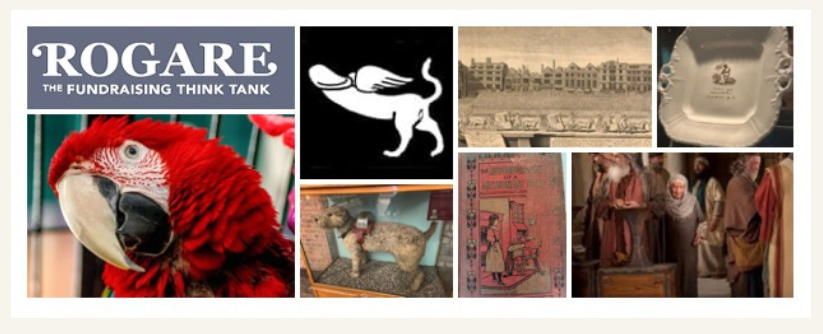
I have so many favourites. There’s a parrot that was trained to say, ‘Put the coin in the box, put the coin in the box.’
Or there’s the dog that walked around Waterloo Station in London with a collection box on its back. The dog was fundraising to help local orphans and when the dog passed away, the charity (Southern Railway Orphanage) stuffed the dog and put it on display at Bournemouth Station and it continued to help raising money in years to come. The dog is now in the Bluebell Railway Museum, still fundraising too!
And there’s Josiah Wedgewood who was raising money for the abolition of the slave trade through selling merchandise.
Finally, there’s a rather bizarre one which I won’t go into today, a masturbate-athon which was created to raise money for sexual health clinics in the 1980’s!
However, one of the earliest examples of donor recognition that I’ve found is this:
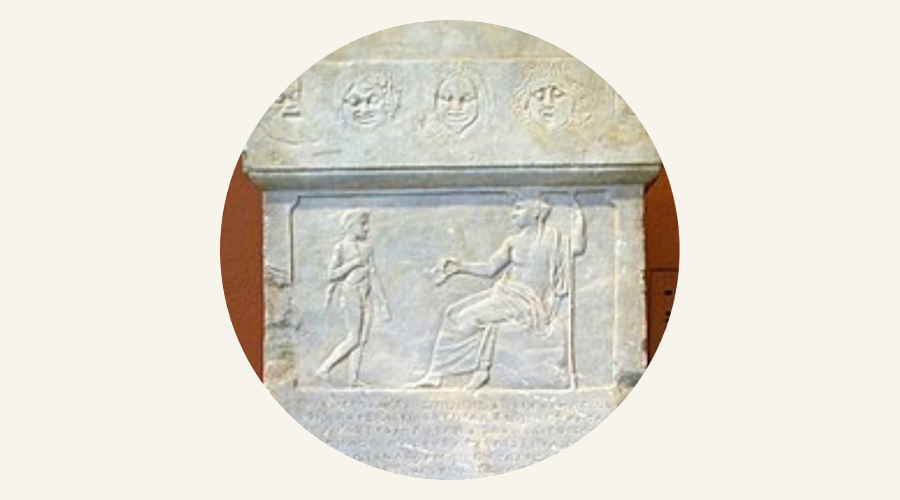
What you see above dates back to 313 BC. It’s public donor recognition for people in Athens, Greece who kindly paid for the costumes and chorus rehearsals in Athenian drama festivals. Donating to this was an expensive but well-respected way for Athenians to use their wealth for the public good.
But today, I really want to talk to you about Nigel, Joan and Robert.
This is Nigel.
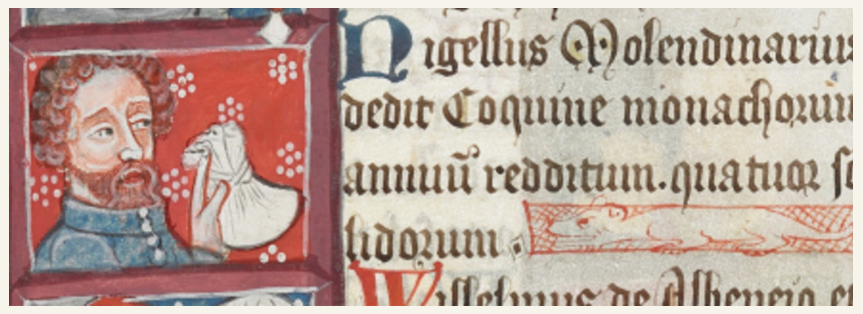
Nigel was a miller in the 14th century and every year he gave a gift of four shillings. You can see his illuminated portrait above, that shows him making his donation.
This is Joan.
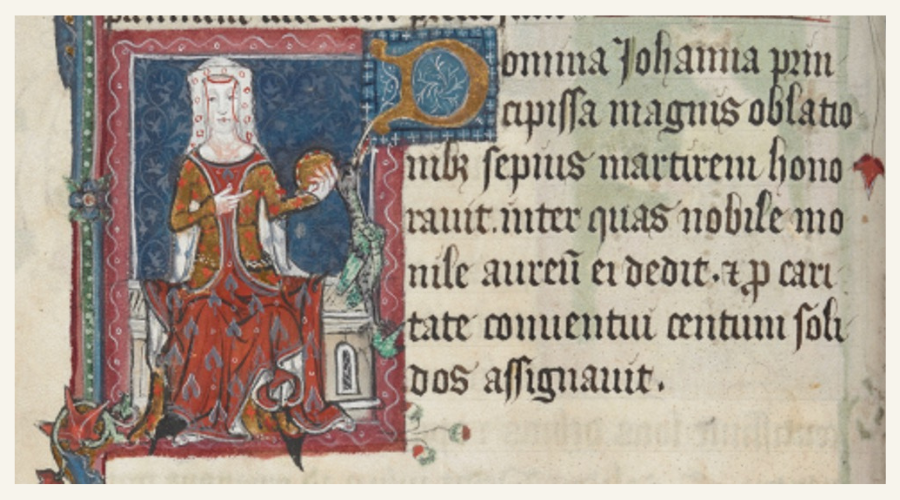
Joan was Countess of Kent, as well as the Princess of Wales and of Aquitaine. She gave 100 shillings and a gold necklace.
Æthelgifu, another donor recorded in the book, donated lands including a herd of pigs with their very own swineherd – 250 sheep, 30 oxen and 20 cows.
And last, but not least this is Robert.
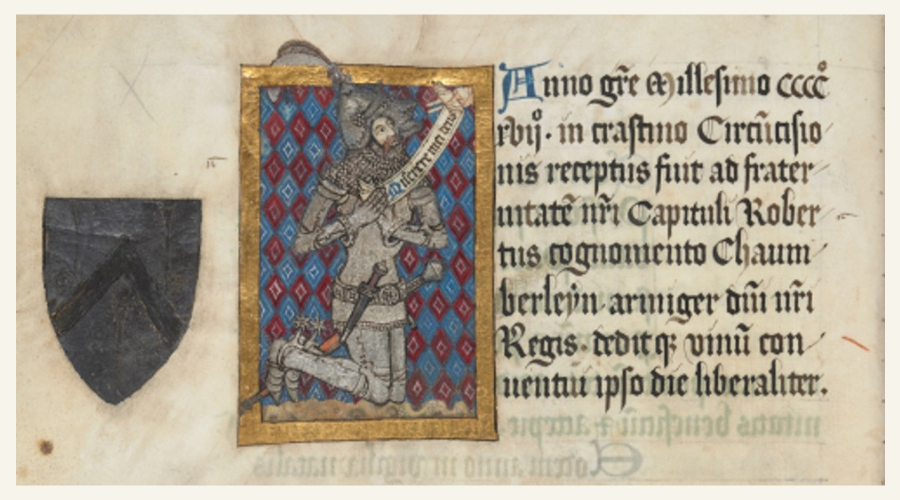
Robert gave wine (we like Robert)! So, of course, gifts in kind are really important too. But why do we still know about Nigel, Joan and Robert today?
It’s because they are all recorded in the benefactor’s book at St Albans Abbey. The book was started in 1380 and everyone who gave a gift was recorded in it – whether that was a little gift (Nigel’s four shillings), a big gift (Joan’s land), or a gift in kind (Robert’s wine).
All gifts were recognised. All gifts were recorded.
Yes, there is a hierarchy. The Kings and Queens are top of the list but everyone else is still there too. And it was done in a very personal way. It showed what each donor looked like as well as what their gift was and what their gift did!
Yet perhaps best of all, each donor was granted a lavish induction ceremony into the benefactor’s society. They were also rewarded with spiritual benefits and, of course, a record in this prestigious book.
But why does it work? Why is donor recognition an important thing to do?
People do more pro-social things when they are rewarded because incentives work. When we give a gift, we get a hit of happy chemicals – dopamine, oxytocin, serotonin and endorphins. And that means it gives our donors joy to be giving money to us.
It also works for us, as fundraisers. If I give a gift, and you receive that gift – the same bit of your brain is lit up. So, donor recognition should give us the same warm and fuzzy feeling that our donors get when they receive our thanks.
All of this illustrates why seeing your name on a donor wall is one of the ultimate ego strokes. It provides social reinforcement of your identity as a kind and generous person.
We’ve all seen our donors go over to a wall of recognition, scan the list with their finger, looking for their name, checking that it is there.
It’s so important to donors that they are recognised for what they do, and that fundraisers say thank you.
And while I’ve talked about a number of historical examples of donor recognition and thanking, we know that this is still important today.
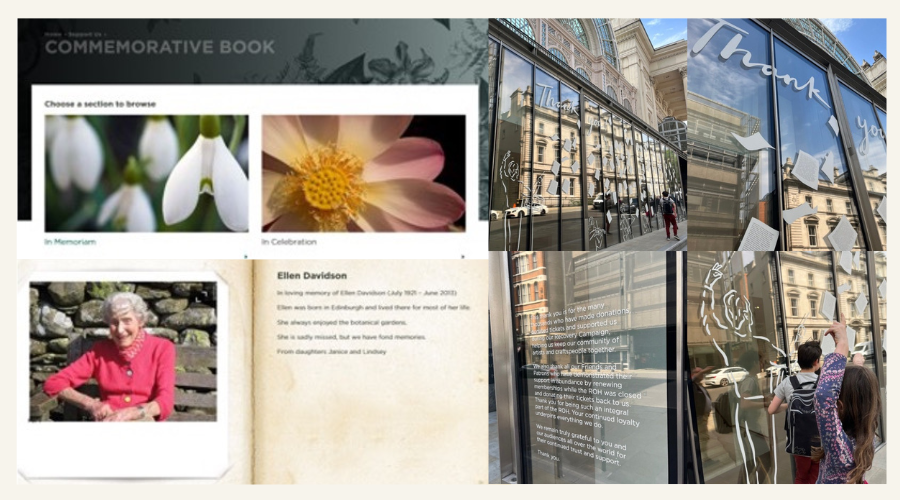
On example you’ll see above was from the Royal Botanical Gardens in Edinburgh, and it is a memorial book that is memorising people who have died and have given gifts in their wills. But it’s also a story about them – what they gave and why they gave it.
The other example is the front of the Royal Opera House in London. There was a big campaign during the COVID-19 pandemic to keep the opera house going. They showcased donors here who gave gifts large and small. While traditionally they might have a more hierarchical way of showcasing their donors, this was a beautiful etching of every name in the same size, recognising every single gift on the glass windows.
So, we all know we ought to recognise donors but what can we learn from the examples I have talked about today?
1) Celebrate your donors
No matter how big or small their gift, show your donor that every little helps and their kindness is appreciated. Make people feel that they are part of your story – a story and a journey that they can help more forward. Donor recognition does this.
2) Build relationships
Donor recognition makes the donor feel warm and fuzzy. It releases all those feel-good chemicals.
3) Encourage others
Seeing that big list in the book, on the wall encourages donors to want to give. They think, ‘Hey I want to get my name on there, how can I do that?’
When people see that their friends, family members or millers are giving to a cause, they’re more likely to believe it’s important enough to get involved themselves.
4) Make it personal
Connect it to what they are giving to. We saw how being immortalised in an illuminated portrait for giving four shillings can have a huge impact. After all, we are all still talking about Robert, Joan and Nigel 700 years later!
5) Future proof your choice
The benefactor’s book at St Albans Abbey has names that have been added from the 11th century all the way up to 16th century… and they still had more room. It was a great choice for how to celebrate all their donors. Make sure you have a future proof way to recognise your donors, because a wall or plaque on its own just might run out of space.
To sum up, that is why I wish I had thought of donor recognition!
Editor’s note: This exhibit was presented at IWITOT10 on November 10th, 2022. You can watch Marina’s full seven-minute presentation below.
© All images supplied by Marina Jones


